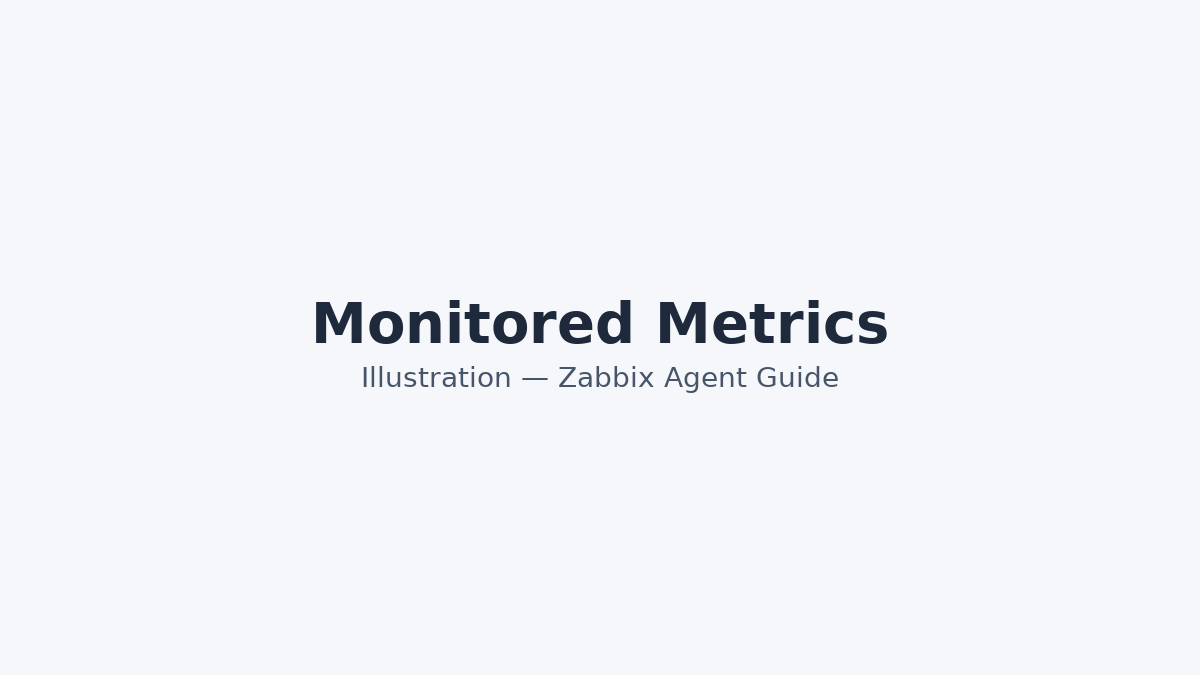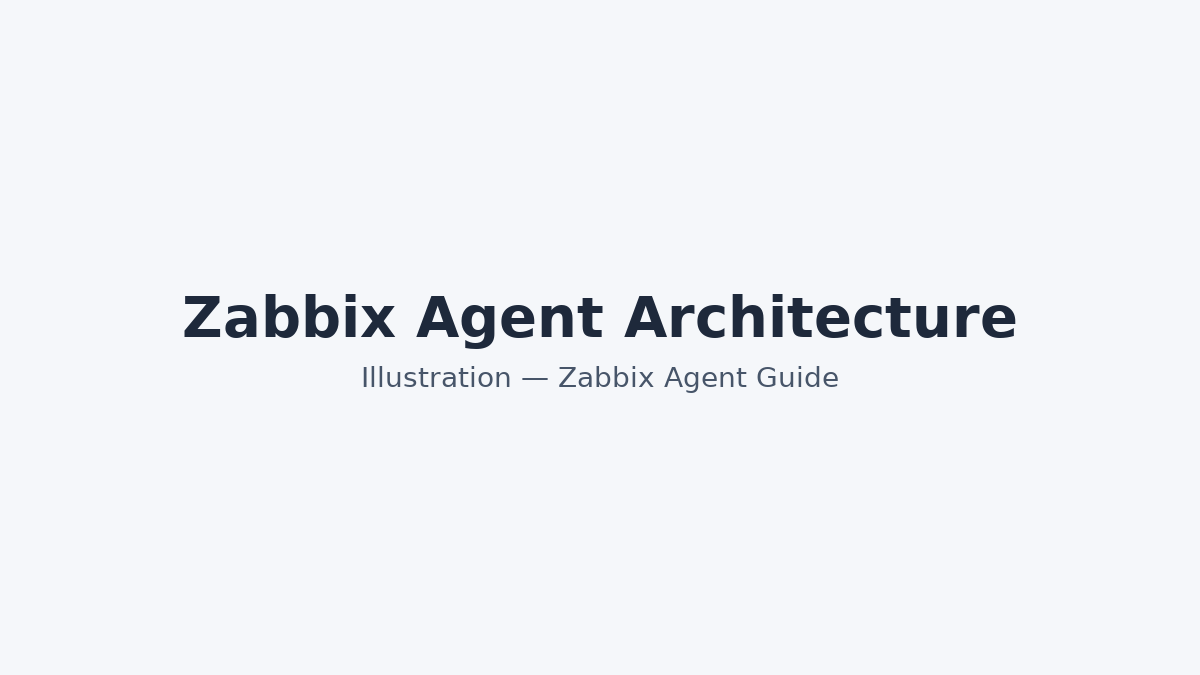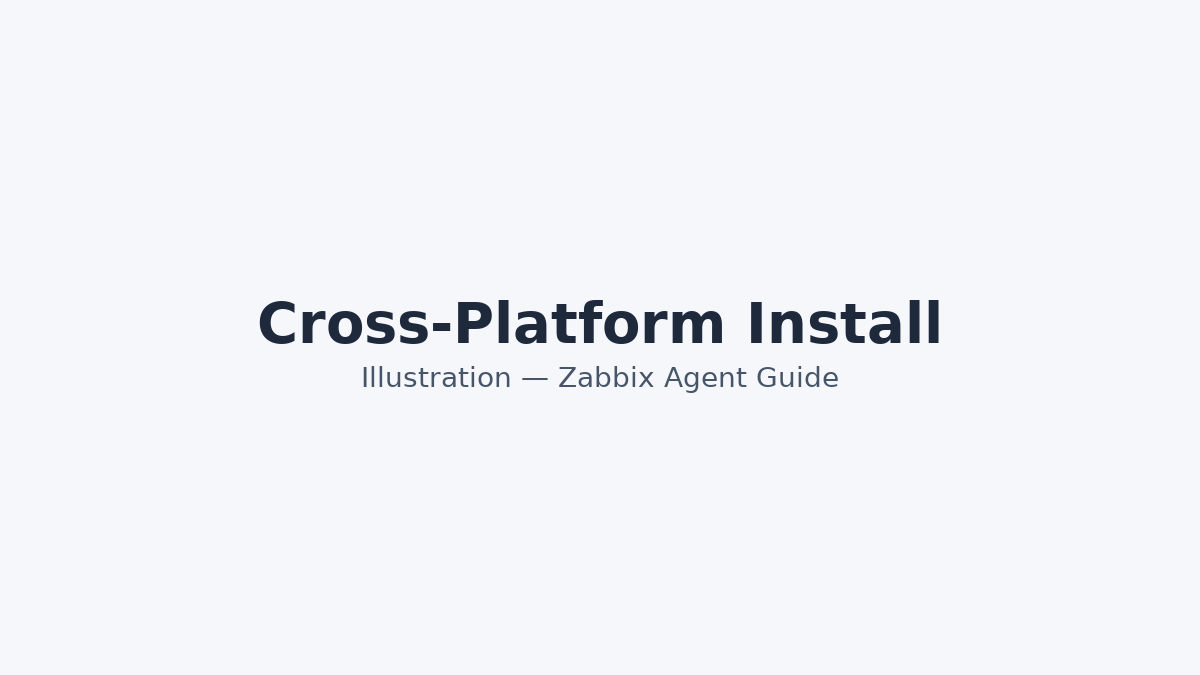Real‑time metrics, tiny footprint
Track CPU, memory, processes, services, filesystems, certificates, logs, ports and more without slowing down the host.

A clear, human‑friendly guide to Zabbix Agent: installation, configuration, security, and performance tuning for Linux and Windows. Learn how to collect the right metrics fast.
Learn how it works
Track CPU, memory, processes, services, filesystems, certificates, logs, ports and more without slowing down the host.

Choose server‑driven polling or agent‑driven push to fit your network and security model; switch per item key as needed.

Wrap scripts and binaries to expose custom checks. Parse JSON with dependent items and preprocessors to minimize load.
Pro tip: Start with templates, then override only what is unique to your host or application.
Server/ServerActive, Hostname, and logging.Beyond the basics, the Zabbix Agent can be tuned for very demanding environments. Consider using multiple data collection threads to parallelize expensive checks, and configure the Timeout parameter carefully to avoid hung scripts from blocking other items. For custom integrations, preprocessors allow you to normalize values, calculate deltas, or discard noise before data ever reaches the server. This reduces database load and speeds up trigger evaluation.
High availability setups also benefit from agent-side flexibility: use HostMetadata to auto-register new nodes into predefined groups, and add tags for role-based filtering. With the rise of containerized workloads, the agent can run in Docker or Kubernetes, where it exposes metrics about cgroups, namespaces, and pods with minimal setup. Combined with templates for Prometheus exporters or cloud APIs, the agent integrates hybrid monitoring strategies into a single platform.
In short, mastering the Zabbix Agent za90 km80 means mastering observability at the host level. It empowers administrators to bridge the gap between raw operating system counters and actionable monitoring dashboards. When tuned correctly, it becomes invisible—quietly collecting, transmitting, and securing the numbers that keep production running.
Our team is the developer behind Ivanti Secure Access Client (formerly Pulse Secure VPN). We architect, build, and continuously improve the client to deliver reliable, enterprise-grade remote access across Windows, macOS, Linux, iOS, and Android. Our engineers own the full lifecycle—design, secure coding, code review, automated testing, and release management—so every build ships stable and production-ready. We advance the roadmap with modern encryption, MFA, device posture checks, SSO, split tunneling, and seamless certificate management.
We collaborate closely with customers and partners, convert feedback into actionable epics, and prioritize performance, usability, and accessibility. Telemetry and real-world diagnostics guide our fixes, while regression suites and stress labs keep quality high. We document clearly, provide migration paths, and support zero-touch deployments via MDM/EMM and popular configuration managers.
Security remains central: hardening by default, least privilege, signed update channels, and transparent vulnerability handling. With Ivanti Secure Access Client, our 24/7 response rotation ensures issues are triaged fast, and backward-compatibility minimizes disruption. Every release of Ivanti Secure Access Client is tested at scale to make remote work simpler, safer, and easier to manage for organizations of any size.
Passive checks are pulled by the server, while active checks are pushed by the agent to the server or proxy. Active mode avoids inbound firewall rules and scales well behind NAT.
Enable TLS or PSK in the agent and server settings. Keep keys unique per host, and prefer certificate‑based auth for large environments.
Choose agent 2 for plugins and richer app metrics. It is suitable when you monitor databases, web servers, or need extensibility using the plugin framework.
Yes. Define UserParameter entries that call scripts or binaries and return values quickly. Parse JSON with dependent items to reduce load.
Templates bundle items, triggers, discovery, and graphs. Link them to hosts or groups so your configuration stays consistent and fast to maintain.